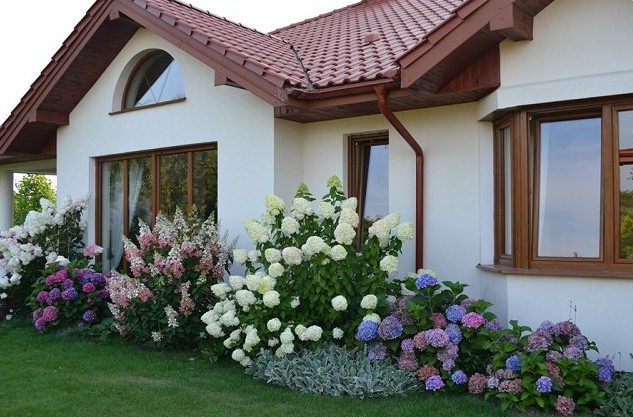

Some will flower on both new and old wood.

Hydrangea macrophylla has two varieties -“mopheads” which have big of flowers, and lacecaps – airy, elegant, flat-topped clusters of flowers Some varieties Hydrangeas will flower only on old wood. The second group of Endless summer hydrangea includes varieties that grow on old (last year’s) stems. Hydrangea arborescens Annabelle produces large blooms in late summer. Hydrangea arborescens, also known as smooth hydrangea or wild hydrangea, has large white – creamy flowers that grow from May to September and can reach a height of more than 2.5 m. The most common types are Floribunda, Grandiflora, White Moth. This type grows quickly and is very easy to care. It has cone-shaped flower heads with whitish color which grows more intense. Hydrangea paniculata is an excellent choice for beginner gardeners.

They form their buds in early summer and do not require special care. The first group of hydrangeas includes the ones that bloom on new growth. There are two main groups of endless summer hydrangea and you can choose the particular species as per your taste and garden design.

To keep the desired shade of color you have to keep treating the soil around the root area.Įndless summer hydrangea – choosing the right species Garden lime results in pink but changing the color takes time, sometimes a month, and will not happen overnight so you need to be patient. Hydrangeas treated with sulfur will remain or turn blue. To achieve a pretty palette of blue, pink, and purple hues, get your soil to a pH level between 5.5 and 6.5.Īdding small amounts of sulfur or garden lime when fertilizing will also help you change hydrangea color. For pink flowers, you need more alkaline soil with pH levels of 6.5 or higher. When you want blue colored hydrangea the soil has to be acidic with pH levels of 5.5 or lower.
Hydrangea landscape design ideas how to#
How to change hydrangea colors? You have to measure the pH of the soil. It is only hydrangea macrophylla (mopheads and lacecaps) that can actually change color, so make sure you grow the right kind. However when you want to change the color of hydrangeas you have to know that white hydrangeas do not change their color. The ideal soil for this plant is slightly acidic to acidic, with pH 6.5 – 4.5. Place in a shady place, watered regularly and thoroughly.Įndless summer hydrangea can dramatically change its color depending on the acidity of the soil. When you grow hydrangeas indoors or in flower pots, you should keep in mind that they have the same requirements as garden species. Drip system or soaker hoses around hydrangeas are the best way to water your plants as they deliver water directly to the ground, keeping leaves dry and a drip system does not waste water through evaporation compared to overhead sprinklers, for example. It is recommended that newly planted hydrangeas are watered frequently until the plants put out new growth, which is an indication that the roots are established. In heavy, wet soils, their roots are likely to rot. You need to keep in mind that despite of the fact that hydrangeas need moist, they do require well-drained soils. They are green only if their moisture is sufficient. You will easily know if your hydrangeas need more water by the leaves of the plant. Hydrangea loves moisture and one of the main requirements for the cultivation of this plant is regular and abundant watering.


 0 kommentar(er)
0 kommentar(er)
